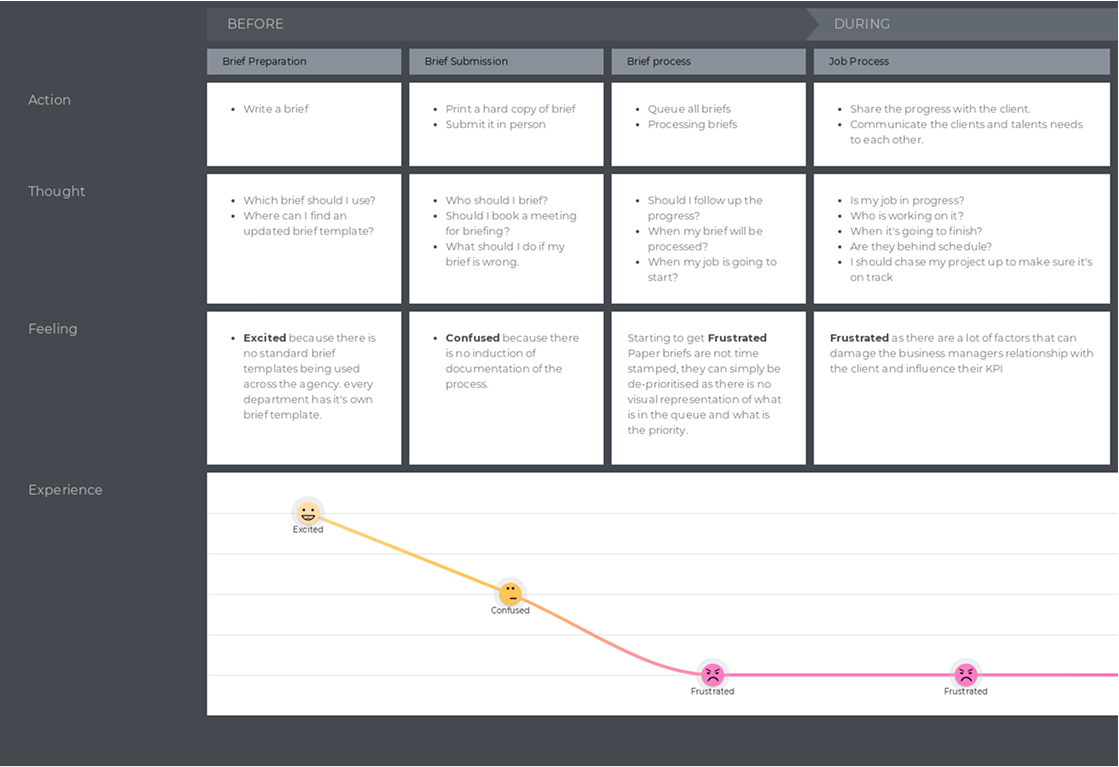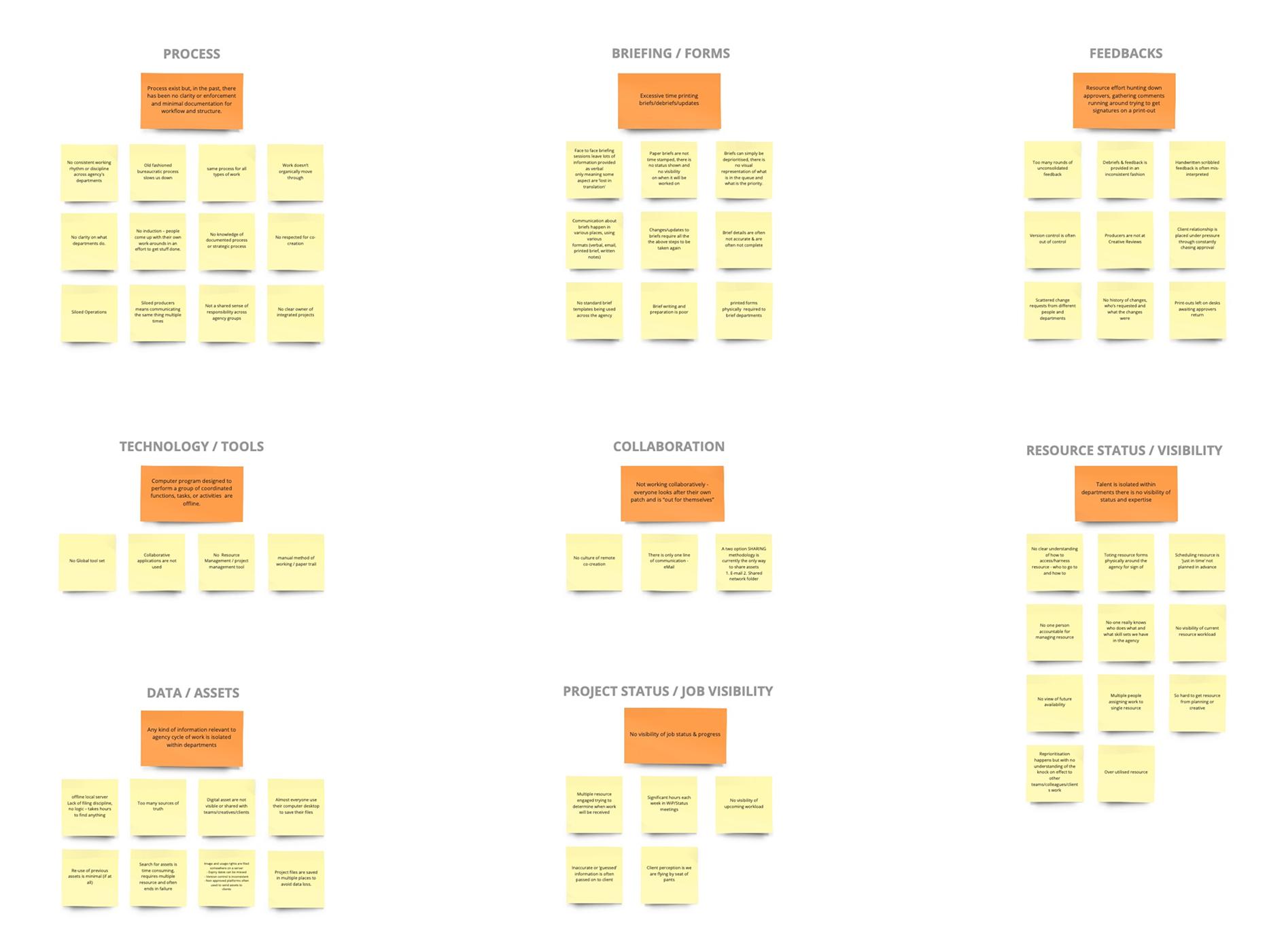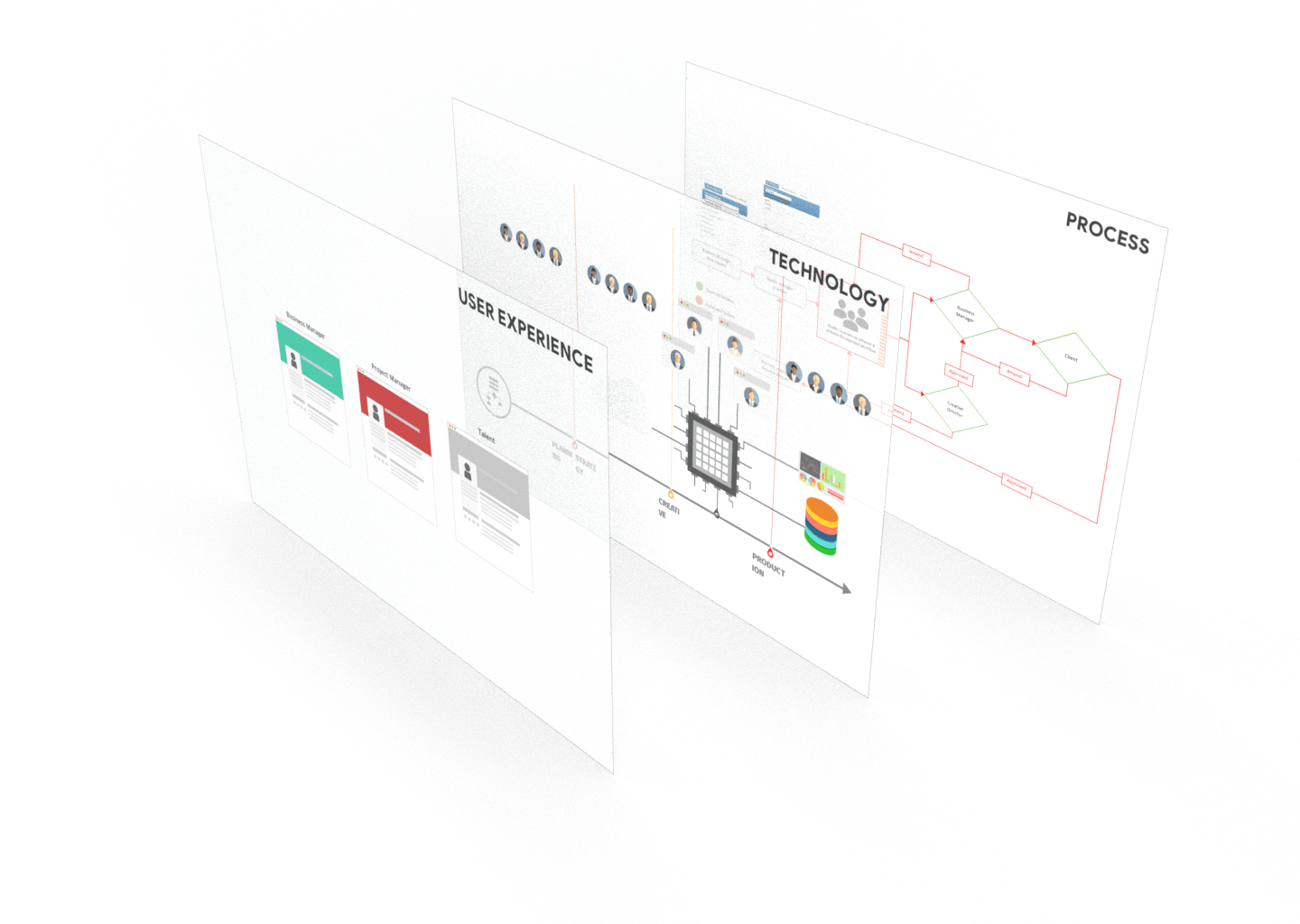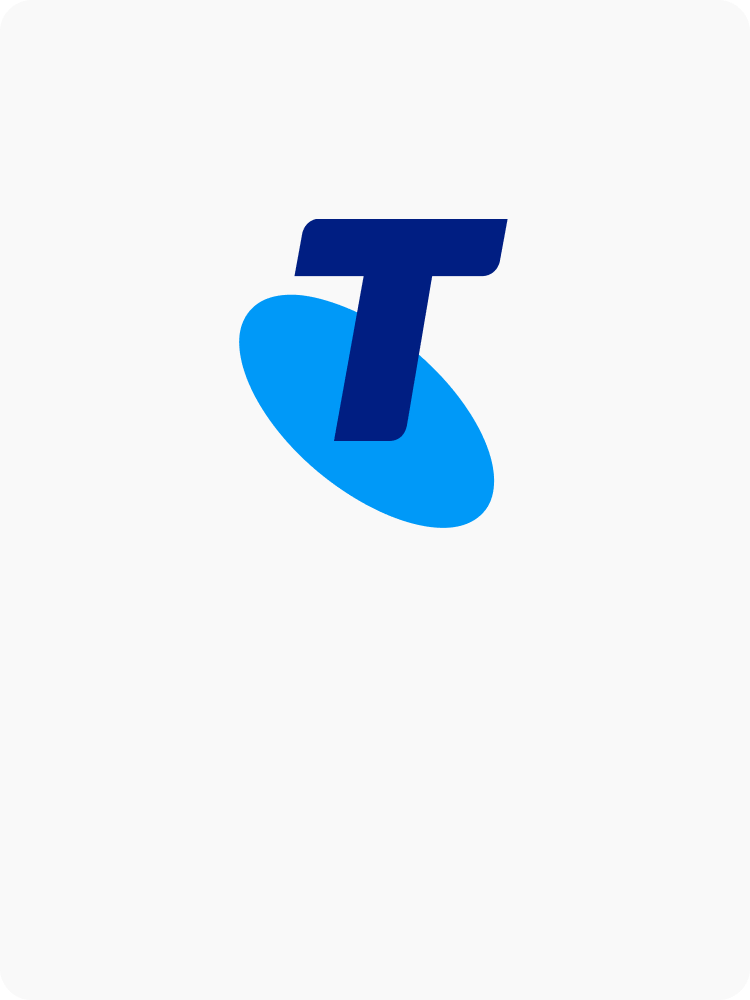Modern Agency
Making Work Smoother at DDB Group
DDB Group Australia is a leading creative advertising agency known for its innovative and strategic brand campaigns, working with major clients across various industries. At DDB Group, I met a senior account manager who expressed his frustration: "I spend too much time chasing approvals from creative directors and clients instead of building relationships and bringing in more business." This wasn't an isolated case—many employees were struggling with slow workflows and unnecessary administrative tasks. There was a widespread feeling that the creative agency process remained stuck in the "Mad Men" era of the 1960s. I saw an opportunity to simplify processes, remove bottlenecks, and help people do what they do best—great creative work.
As the Design & Implementation Lead, I was tasked with redesigning the agency's operations model collaborating with operations director to streamline workflows, improve employee satisfaction, and increase profitability. My goal was to co-create a solution with stakeholders by understanding their needs and pain points.
I conducted discovery sessions with stakeholders, including interviews, observations, and hands-on participation, to identify pain points like inconsistent briefing models, slow approvals, and lack of centralised data. I then designed a solution centred on three integrated layers: process redesign, technology integration, and personalised user experience. This included breaking down departments into micro-services, automating repetitive tasks, and creating personalised dashboards to declutter interfaces and improve decision-making.
The redesigned operations model saved 19,200 hours annually, equivalent to $2.3M in cost savings. Employee satisfaction increased by 75% within the first quarter, and the agency saw improved efficiency, faster approvals, and better resource utilisation.
To build a system that work for employees, I looked for an answer to the below questions:
To find answers to these questions I conducted interviews with internal stake holders including creative directors, project managers, producers, account managers, studio managers and craft personnels, observed workflows, and tested processes myself to understand the real pain points. This hands-on approach following by mapping out the entire journey ensured we tackled the right problems.

DDB employes' journey

To do more,
Employee should do less admin work
Employees were spending too much time on small tasks that technology could handle. By automating, streamlining, and digitalising the process we freed them up for more meaningful work.
Talent-first approach. Three cohesive layers designed to support employees in their daily tasks.

Smaller, more agile teams for better collaboration
Clearer workflows and responsibilities to reduce confusion
Faster approvals and structured feedback loops to prevent delays
Continuous feedback from employees to improve processes
Manager’s dashboard is tailored to efficiently manage projects and track their progress.
Talent's dashboard focuses on assigned daily tasks and their priorities.
The redesigned operations model saved 19,200 hours annually, equivalent to $2.3M in cost savings. Employee satisfaction increased by 75% within the first quarter, and the agency saw improved efficiency, faster approvals, and better resource utilisation.

Ash managed a very difficult and complex system change within DDB. He did this with respect, expertise, and diligence. Well done Ash—a tough job delivered well!"
— Amanda Fuller | Managing Partner, DDB Remedy Australia

Ash is a passionate problem-solver; he is a values-based professional and a positive force on the organization’s culture.
— Nicole Taylor | Former CEO, DDB Australia | Lego SVP, CEO
This project is valuable to me as it demonstrated the power of human centred design in operational transformation. By optimising technology and processes, for human experience, we built a future-proof agency model that empowered employees and optimised the efficiency and effectiveness of the process for both business and external customers. This case study is a testament to how strategic experience design can drive business impact beyond product design—into the very fabric of organisational efficiency and culture.
Other Projects

Tap, Trade, & TrackCommSec

Transfer SharesCommSec

AI Stock ScreenerCommSec

Zero Product OriginationCommSec

Empowering EmployeesTelstra
You don’t have to see the whole staircase, just take the first step.
–– Martin Luther King ––